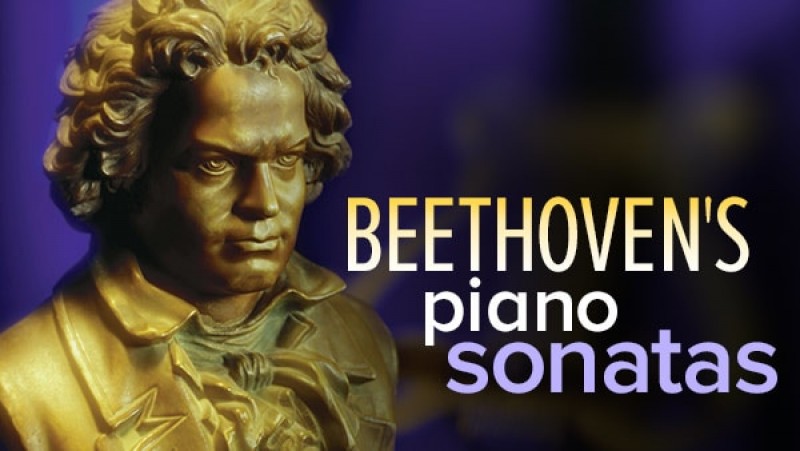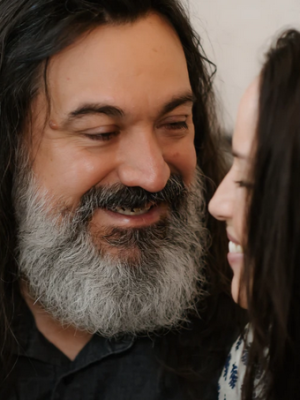Beethoven’s Piano Sonatas
$320.00 Original price was: $320.00.$58.90Current price is: $58.90.
Nonetheless, once he became famous, Beethoven rarely if ever had to buy his own pianos, as piano builders vied with each other to lend him instruments. File size: 7.05 GB
Beethoven’s Piano Sonatas
Beethoven was a revolutionary man living in a revolutionary time. He captured his inner voice—demons and all—and the spirit of his time, and in doing so, created a body of music the likes of which no one had ever before imagined. “An artist must never stand still,” he once said. A virtuoso at the keyboard, Beethoven used the piano as his personal musical laboratory, and the piano sonata became, more than any other genre of music, a place where he could experiment with harmony, motivic development, the contextual use of form, and, most important, his developing view of music as a self-expressive art.
Hide Full Description
Pushing the Piano to Its Limit and Beyond
Spanning the length of his compositional career, Beethoven’s 32 piano sonatas provide a window into his personal musical development, and they show the concept of the piano as an instrument and the piano sonata as a genre undergoing an extraordinary evolution.
The sonatas are not simply compositions for the piano, but are about the developing technology of the piano itself, an evolving instrument that Beethoven pushed to its limits and then beyond, ultimately writing music for an idealized piano that didn’t come into existence until some 40 years after his death.
An Engaging and Exhilarating Professor
As in his previous courses, Professor Greenberg combines his perceptive analyses of musical excerpts with historical anecdotes, metaphors, and humor. He shows what goes on inside a musical composition: how it came to be written, how it works, and how—as is often the case with Beethoven—it may break all the rules to achieve a new and powerful effect. This course is somewhat technical and although musical knowledge is helpful, it is not necessary.
Popular, Experimental, Revolutionary, Shocking
Beethoven’s 32 piano sonatas include some of his most popular works as well as some of his most experimental. This course touches on every one of these fascinating pieces, approaching them chronologically, from the terse and powerful first sonata of 1795 to the revolutionary Hammerklavier Sonata of 1818 and the radical last three sonatas of 1820–1822.
In addition to the Hammerklavier, you will explore in detail the other sonatas that, by virtue of their popularity or other special qualities, have been bestowed with evocative nicknames. These include:
Pathétique (Piano Sonata no. 8 in C Minor, op. 13): The modern popularity of this piece has obscured its shocking originality, which led a contemporary to characterize Beethoven’s work as “lots of crazy stuff.”
Funeral March (Piano Sonata no. 12 in A-Flat, op. 26): Beethoven’s first 11 piano sonatas challenged and eventually broke the bonds of the 18th-century Classical style. In this work, he fully embraced a genuinely experimental, avant-garde approach to the sonata.
Moonlight (Piano Sonata no. 14 in C-Sharp Minor, op. 27, no. 2): The composer Hector Berlioz wrote that the haunting first movement of this famous work is “one of those poems that human language does not know how to qualify.”
Tempest (Piano Sonata no. 17 in D Minor, op. 31, no. 2): Although Shakespeare’s The Tempest reportedly inspired this sonata, the thematic parallels between the two works are elusive. But like the title of Shakespeare’s play, Beethoven’s sonata must qualify as one of the most expressively “tempestuous” in the repertoire.
Farewell (Piano Sonata no. 26 in E-Flat, op. 81a): Also known as Les Adieux and Das Lebewohl, this programmatic work commemorates the departure from and return to Vienna of Beethoven’s close friend Archduke Rudolph.
Not all of Beethoven’s greatest piano sonatas have nicknames. The last three are conventionally known by their opus numbers—109, 110, and 111—and are among Beethoven’s most pathbreaking works.
“Oh, to Have Heard Him Play!”
Beethoven first achieved fame as a thrilling and unorthodox pianist who treated the piano, according to his contemporaries, in an “entirely new manner.”
“When Beethoven played, expression always came first,” says Professor Greenberg. “Beethoven was no more capable of slavish adherence to a steady beat than he was able to follow the constructs and rituals of Classicism. Oh, to have heard him play!”
Get immediately download Beethoven’s Piano Sonatas
To be present while Beethoven played was considered by contemporaries to be a revelatory experience. Johann Wenzel Tomaschek, a rival piano virtuoso, observed: “Beethoven’s magnificent phrasing and particularly the daring of his improvisation stirred me strangely to the depths of my soul; indeed, I found myself so profoundly bowed down that I did not touch my piano for several days.”
Piano manufacturers saw things differently. According to Andreas Streicher, Beethoven was so violent at the keyboard that he was “unworthy of imitation. … He carries on in a fiery manner, and treats his instrument like a man who, bent on revenge, has his archenemy in his hands and, with cruel relish, wants to torture him slowly to death.”
Nonetheless, once he became famous, Beethoven rarely if ever had to buy his own pianos, as piano builders vied with each other to lend him instruments. Nor did Beethoven let shortcomings of contemporary pianos limit his creativity. In his Piano Sonata no. 7 in D, op. 10, no. 3, he expands two musical phrases into high and low registers that didn’t exist on the keyboards of the day.
Transferring Despair into Musical Action
Beethoven’s childhood was dominated by abuse and loss. Already a bundle of gastric ailments and psychological neuroses, he went deaf over the course of his young and middle adulthood. He was desperately unlucky in love. Desiring a child, he did everything in his power to steal his nephew Karl from the boy’s mEverything Else; when he succeeded, Karl attempted suicide.
As he entered his final decade, Beethoven became genuinely paranoid. And yet, says Professor Greenberg, Beethoven translated his experience into action—musical action—by composing pieces that by some amazing alchemy universalized his problems and his solutions.
Analyzing Beethoven’s “Game”
Professor Greenberg analyzes many musical passages, taking you note-by-note, phrase-by-phrase through different movements of the sonatas, showing how Beethoven plans and achieves his surprising effects. Beethoven paid scrupulous attention to all aspects of his compositions, and Professor Greenberg elucidates these features and brings them vividly to life, such as thematic development, tempo, large-scale dramatic progression, and psychological manipulation by the performer.
You will learn a wealth of musical vocabulary: terms such as Viennese Classical style, sonata form, theme and variations, exposition, modulating bridge, recapitulation, cadence, minuet, rondo, fugue, and scherzo.
What You Will Hear: Extraordinary Performances by a Celebrated Pianist
Beethoven died 50 years before the invention of sound recording, so we will never hear his voice or the sound of his playing.
You will hear literally hundreds of excerpts of Maestro Claude Frank’s recordings over the span of the course. Frank’s recording of the 32 sonatas was originally released for the Beethoven bicentennial in 1970, and was hailed as “one of the year’s 10 best” by Time magazine.
Truly, Beethoven’s piano music is his voice, emerging from his mind, through his fingers, to our ears and hearts. And his piano sonatas are, more than any other of his amazing works, his personal testament, expressed in his own voice.
Be the first to review “Beethoven’s Piano Sonatas” Cancel reply
Related products
Other Courses
Other Courses
Other Courses
Other Courses







![Penina Petersen – Freezer Meals 1: $1.50 Dinners – Starter [eBook & Video Guides]](https://graspcourse.net/wp-content/uploads/2022/02/Penina-Petersen-–-Freezer-Meals-1-1.50-Dinners-–-Starter-eBook-Video-Guides-300x171.png)





Reviews
There are no reviews yet.